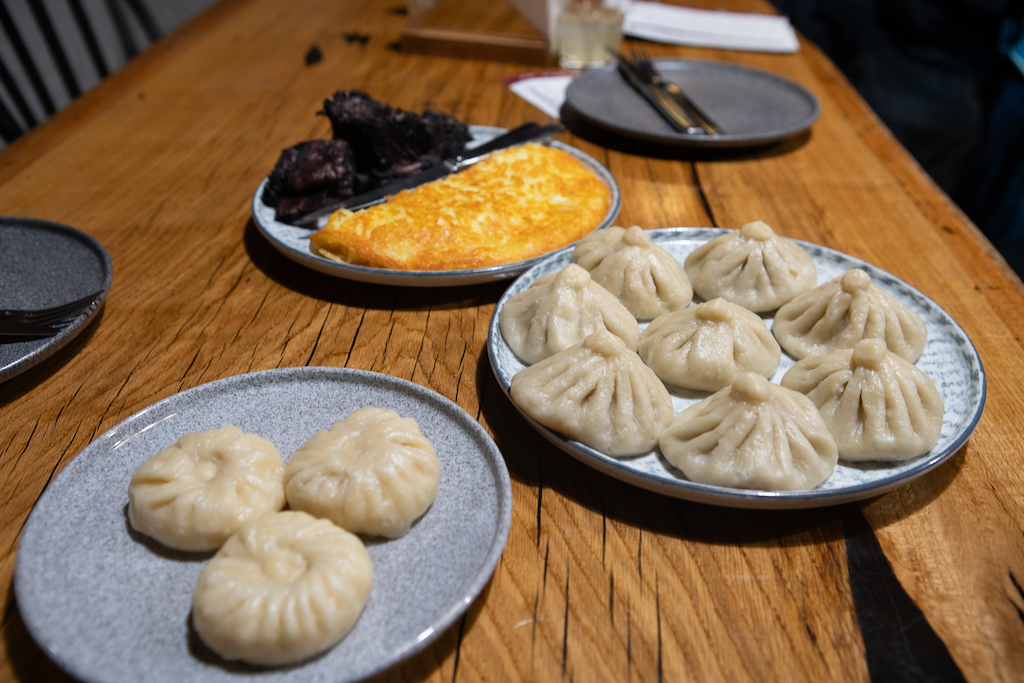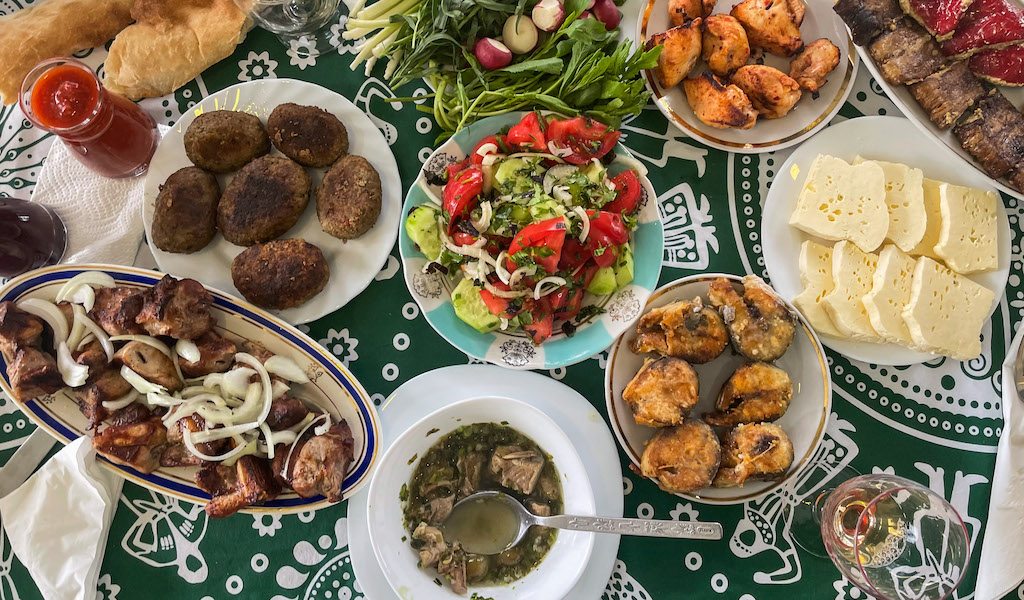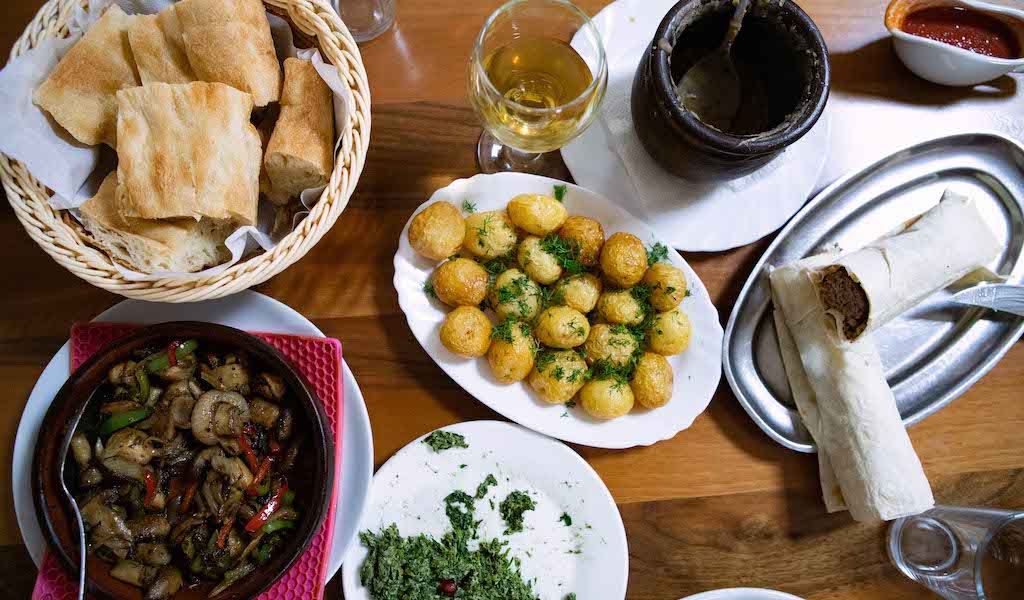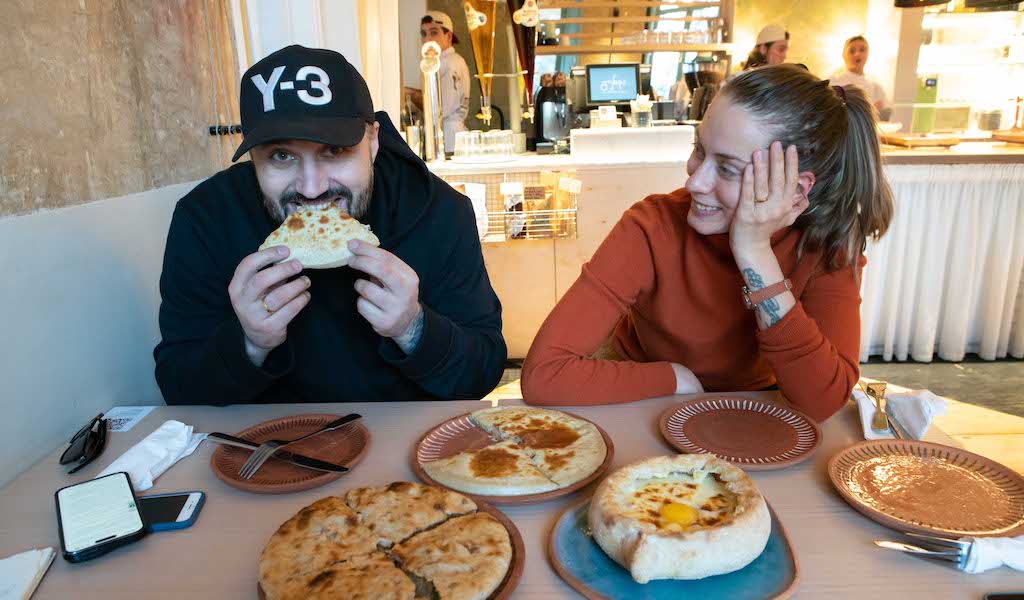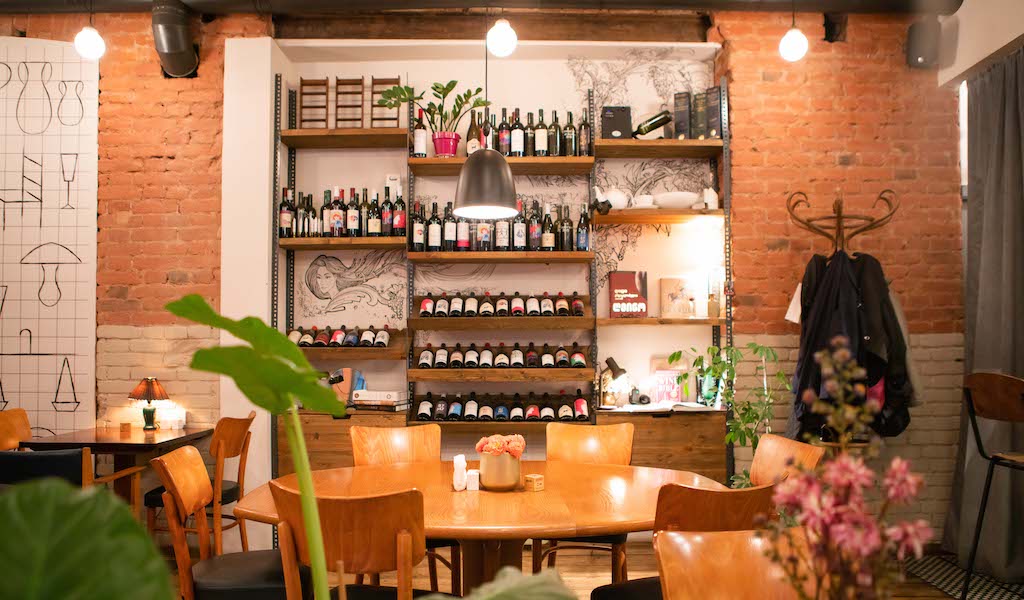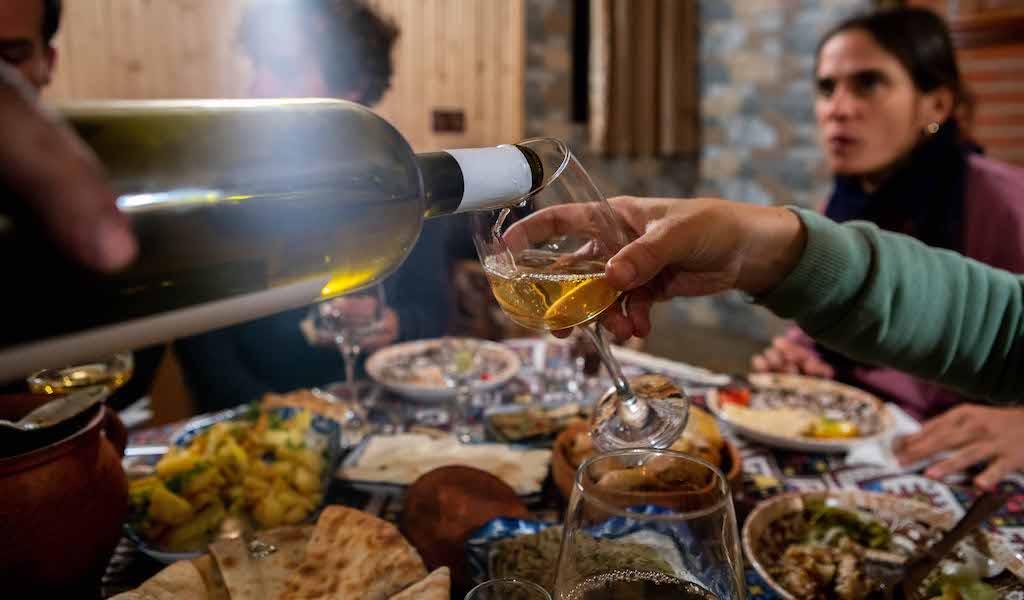We can't find the internet
Attempting to reconnect
Something went wrong!
Hang in there while we get back on track
Search results for "Pearly Jacob"
Tbilisi
Miracle Ethiopian Food: Injera, Tbilisi Style
When Ethiopian national Mimi Alemu Desta was proposed Georgia as a temporary place of refuge by to help her escape her war-torn country in 2021, she assumed it was the state in the U.S. Little did she imagine she would end up in the South Caucasus republic she didn’t even know existed till then, let alone that she’d be the first person to introduce the spice-and flavor-infused cuisine of her home country to residents of Tbilisi.
Read moreTbilisi
Pictograma: Khinkali, As It Should Be
For a dish so ubiquitous, one would be forgiven to think there’s little to debate about Georgia’s national dumpling, the khinkali. But just as tastes vary, every Georgian has their own khinkali preferences and opinions. That’s certainly the case for chef Gela Arabuli, who believes khinkali has been gentrified and mass produced to a point where most people have forgotten the dumplings’ origins in the mountains and how they should really taste. “Real khinkali is from the high mountains. And there are no pigs in the mountains,” insists Gela, referring to the most popular and common filling of minced beef and pork in equal parts as kalakuri, or “city style,” khinkali.
Read moreTbilisi
Recipe: Chakapuli, the Verdant (and Tart) Pearl of Georgian Stews
There’s no dish that signals in the arrival of spring and early summer in Georgia like the verdant tangy lamb stew called chakapuli. The spring dish, originally from the country’s wine growing eastern region of Kakheti, makes its seasonal debut at Orthodox Easter (or Paska) feasts that usually falls around mid-April. After a long, solemn period of reflection and penance when all meat (except the permissible fish) and pleasure are eschewed by the faithful, joyful cries of “Kristi Aghsdga!” or “Christ is Risen!” replaces standard greetings for a day of feasting and celebration. Families and friends (and lucky invited guests) gather around tables laden with all the classic staples of a Georgian supra, but the signature starter dish proffered is soup bowls of lamb (or veal) simmered in a rich white wine-based broth with fresh green tarragon, spring onions, green coriander, fresh young garlic bulbs and sour green plums called tkemali.
Read moreTbilisi
Ghebi: Subterranean Comfort
Few locals, let alone tourists have reached the isolated mountain village of Ghebi in Georgia’s northern borderlands of Racha. However, many have passed through the doors of its namesake basement restaurant in the bustling left bank district of Marjanishvili in downtown Tbilisi. For more than a decade, the eatery has been steadily serving up comfort food from the region including lobio, the red bean stew with or without the aged Racha salted ham called lori, bean-stuffed pies called lobiani, and skhmeruli, the garlic saturated pan-roasted chicken dish. Located on Aghmashenebeli Avenue, which is more well known for its profusion of Turkish lokantasi diners with ready-made buffet spreads and Arab restaurants that attract many of the city’s foreign residents and visitors from South Asia and the Middle East, Ghebi remains a staunch local haunt frequented by tables of Georgian men toasting their chachas late into the evening over tables loaded with food.
Read moreTbilisi
Gunda: Khachapuri Revivalists
Google khachapuri and the top images that pop up are that of the classic boat-shaped version, its golden orb of an egg yolk cracked in the center of melty cheese still bubbling fresh out of the oven. This classic recipe from the Black Sea coastal region of Adjara that gives it its name, Adjaruli khachapuri, is undeniably one of the most iconic visual representations of Georgian cuisine. While indeed an undeniably photogenic and enticingly seductive dish, the Adjaruli khachapuri’s domineering image often obscures the fact that there are dozens of different varieties of the khachapuri that exist around the country. Most restaurant menus options are also often reduced to just a handful of varieties, like the imeruli, with a single layer of cheese baked inside, the more opulent megruli, which adds a crust of cheese on top, and the all too ubiquitous Adjaruli.
Read moreTbilisi
Satatsuri: Café Culture, Georgian Style
If there were ever such a thing as an oracle for gentrification, Eka Janashia believes her father could qualify as one. We’re sitting in Eka’s chic café, Satatsuri, with its earthy brick walls and warm wood floors – a space that used to be the family head’s modest two-bedroom ground floor apartment in a rather rundown corner of Marjanishvili. The district was established in the early 17th century by German migrants who were invited by Tsar Alexander I to settle in what was then part of the Russian Transcaucasian Empire.
Read moreTbilisi
CB On The Road: Beyond Khvanchkhara Wine in Racha
“Lobio saved Georgia in the nineties,” quips Aleko Sardanashvili as he plonks a round clay pot of the simmering red bean stew in the middle of a loaded table of food. It groans under the weight of an assortment of Georgian feasting staples - khachapuri, lobiani, tomato and cucumber salad, sauteed potatoes garnished with greens, jonjoli salad, pickled chilies, fried chicken, tkemali plum sauce and more. We’re at Aleko’s marani (or wine cellar) in Racha – one of Georgia’s most sparsely populated regions, located in its northwestern frontier. It used to be a six-hour long circuitous route by car to get here from Tbilisi until a spanking new road launched last year cut travel time to Racha by 1.5 hours. Since then, visitor numbers have sharply increased to Georgia’s smallest wine region, a place that offers the ability to dip into family wineries in vineyards slung along the slopes of its lower valleys and drive up to high ridges for magnificent views of the snowcapped peaks of the Greater Caucasus massif, all in one afternoon – although the reverse order is more advisable, for obvious reasons.
Read more
